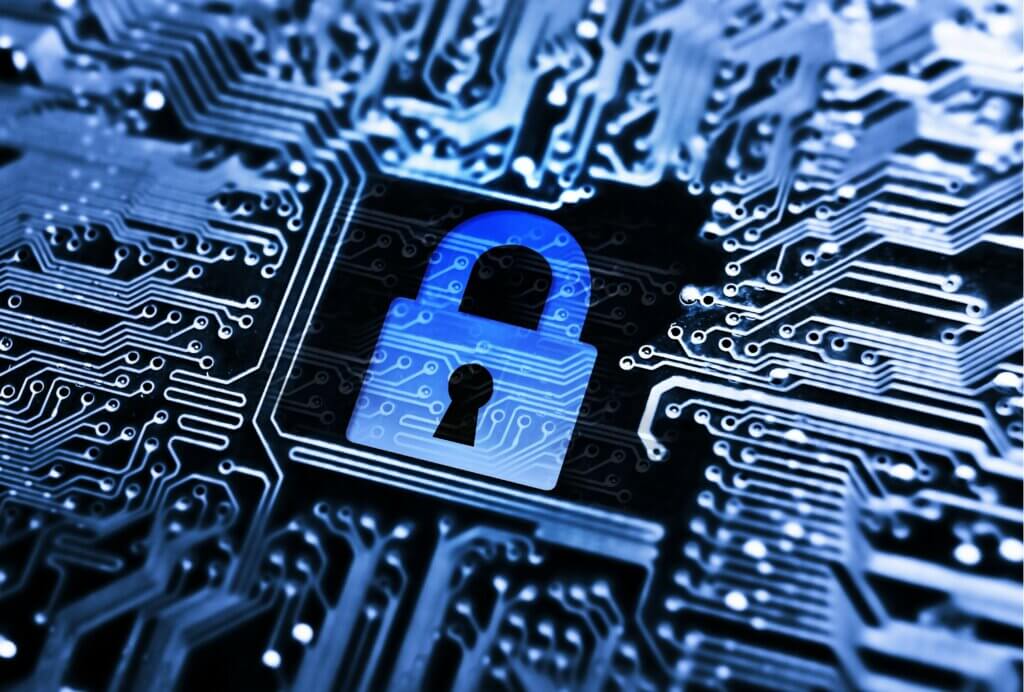Preventing Identity Theft

According to the Federal Trade Commission (FTC), identity theft complaints increased from 651,000 in 2019 to 1.4 million in 2020. With the rate of identity theft more than doubling in just one year, it’s important that people do their due diligence in an effort to protect their identity. If a fraudster steals your personal information, they can run up charges on credit cards, withdraw money from your accounts, open new accounts in your name, and more. Here are some ways you can prevent identity theft:
Safeguard Your Physical Records
While fraudsters are becoming increasingly sophisticated in their ways of stealing personal information, the tried-and-true method of physical theft is easy to rely on. Identity thieves can do a lot of financial harm with a lost or stolen wallet, mail, or documents you throw away. To limit the chances of identity theft, safeguard important documents at home, such as your Social Security card, birth certificate, passport, recent credit union statements, and tax documents. Put these documents in a locked safe. If you’re unsure of what to keep in the safe, what to throw away, and when it’s okay to throw away documents, visit this website. If you throw away any documents with your personal information on them, tear them up or shred them beforehand. Sensitive materials such as credit union statements, credit applications or offers, insurance forms, medical statements, checks, and utility bills can be a goldmine for thieves if they search through your trash.
Additionally, you should consider collecting your mail daily. If an identity thief is willing to steal sensitive data out of your garbage, it’s likely they’re willing to steal sensitive data out of your mailbox. Consider signing up for Informed Delivery, which will notify you with a digital preview of the items being delivered—that way you’ll know if something is missing. If you know you’re going to be away from home for a while, sign up for Hold Mail service. By opting to use this tool, the USPS will safely hold your mail at your local Post Office until your return home, for up to 30 days.
Enable Two-Factor Authentication
Consider enabling two-factor authentication on all of your accounts. By adding two-factor authentication, accounts can only be accessed after entering the username and password, then by completing another prompt—such as entering a code you receive via text or email or scanning a fingerprint. Without having access to the latter, a fraudster can’t access your accounts.
Don’t Overshare on Social Media
Social media platforms are treasure troves for identity thieves. Not only is it common for someone to share their full name and date of birth on social media, but people are often sharing updates on their whereabouts and interacting with family members. For example, let’s say John Smith makes the following status update, accompanied by a photo: “Hey, everyone! Check out my new car! I’m going to take it for a spin and meet my mom at the dog park. Spike always loves playing fetch!” Under the photo, John’s mother, Jane (Doe) Smith comments, “I can’t wait to see you!” Without John realizing it, answers to common security questions were revealed:
What is the make and model of your first car?
What is your childhood pet’s name?
What is your mother’s maiden name?
Be wary of oversharing online. For tips on staying safe and limiting the threat of identity theft on social media, visit the National Cybersecurity Alliance’s website.
Monitor Your Statements and Credit Report
It’s important that you take the time to regularly review your credit card and credit union statements. If a fraudster somehow ends up with your credit card number or account information, they could start making charges. A common tactic is to make small charges at first to see if they can get away with it. After that, they may start increasing the charge amounts or just continue to tally up small purchases—hoping that you never notice. If you notice something suspicious, call your credit union or credit card provider right away. They will walk you through the steps needed to lessen or avoid the impact of identity theft. Further, you can find more information on the FTC’s website.
You should also monitor your credit report. By going to annualcreditreport.com, you can get a free report every 12 months from each major credit bureau—Equifax, Experian, and TransUnion. Checking your report can show you where your credit stands, ensure your credit information is accurate, allow you to respond to changes quickly, and give you insight on how it can be improved. If you look at your report and suspect you’ve been a victim of identity theft, you can report the theft through IdentityTheft.gov and get a recovery plan.
Freeze Your Credit
When you freeze your credit, nobody (including you) can open an account, apply for a loan, or get a new credit card in your name. To freeze your credit, you must contact each of the three main credit bureaus: Equifax, Experian, and TransUnion. There are online, mail-in, or telephone options for freezing your credit. It’s free, it has no impact on your score, and you can unfreeze your credit at any time. If you’re not actively shopping for a credit card or loan, freezing your credit provides a good protection against identity theft.
If you have questions about preventing identity theft, or if you’re looking for a way to increase security on your financial accounts, contact your local credit union.
(Article Courtesy of Synergent)